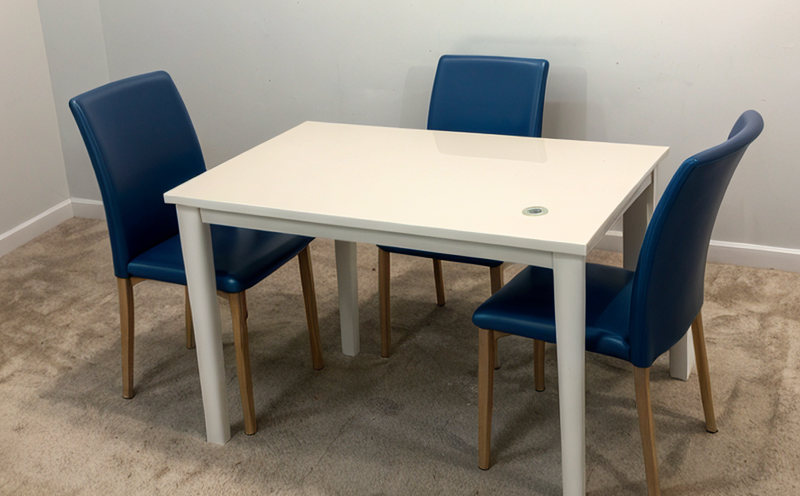DIN EN 15186 Scratch Resistance Testing of Furniture Plastics
The DIN EN 15186 standard is specifically designed to evaluate the scratch resistance properties of plastics used in furniture and interior applications. This testing procedure is crucial for ensuring that materials meet durability, safety, and aesthetic requirements demanded by modern consumer expectations.
Scratch resistance testing helps manufacturers assess how well a plastic surface will withstand wear from daily use, such as fingernail scratches or minor abrasions during assembly or handling. The test method involves exposing the specimen to various types of abrasive tools under controlled conditions until failure is observed. The number and type of scratches are then recorded.
The DIN EN 15186 standard includes detailed guidelines on how to prepare specimens, select appropriate abrasive materials, control environmental factors like temperature and humidity during testing, and interpret results. Compliance with this standard ensures that furniture manufacturers can produce products that not only meet regulatory requirements but also exceed customer expectations regarding longevity and appearance.
For accurate and reliable scratch resistance testing, it's essential to follow the exact procedures outlined in DIN EN 15186. This includes selecting the correct abrasive tool, applying consistent pressure, maintaining precise angles during contact with the specimen, and ensuring that all measurements are taken under standardized conditions. Properly conducted tests provide valuable insights into the performance characteristics of different plastics used in furniture manufacturing.
The process begins by preparing the specimens according to specified dimensions and tolerances defined in DIN EN 15186. Specimens should be free from defects or imperfections that could affect the test results. Once prepared, they undergo rigorous testing using an abrasion machine designed specifically for this purpose. During testing, the abrasive tool moves across the surface of the specimen at a constant speed and pressure until it causes visible damage.
After completing the test, technicians carefully examine each scratch to determine its depth, width, length, and location on the specimen. They also document any other observations that might impact the overall quality score. Based on these findings, they assign a numerical value representing the scratch resistance of the material.
Compliance with DIN EN 15186 is important because it demonstrates commitment to producing high-quality furniture components made from durable plastics. By adhering strictly to this standard during development and production processes, manufacturers can ensure their products meet industry standards while maintaining competitive advantage through superior performance characteristics.
This testing procedure plays a vital role in quality assurance programs aimed at improving product reliability and customer satisfaction across various sectors including office furniture, home furnishings, automotive interiors, and more.
Applied Standards
| Standard | Description |
|---|---|
| DIN EN 15186 | European standard for scratch resistance testing of furniture plastics. |
| ASTM D4303 | American standard providing similar guidelines but tailored to North American markets. |
| ISO 7725 | International standard covering abrasion tests for polyvinyl chloride (PVC) materials. |
Industry Applications
- Office furniture manufacturers ensuring their products endure frequent handling and use.
- Home furnishing companies developing long-lasting upholstery fabrics and seating components.
- Automotive industry suppliers creating interior trim pieces that maintain appearance over time.
- Furniture designers incorporating scratch-resistant materials into custom projects.
Environmental and Sustainability Contributions
Adhering to DIN EN 15186 contributes positively towards sustainability efforts by promoting the use of durable, long-lasting plastics in furniture manufacturing. This reduces waste generation associated with frequent replacement due to poor scratch resistance. Additionally, compliant products contribute to reduced environmental impact through enhanced durability and recyclability.
Manufacturers who follow DIN EN 15186 can achieve certification that enhances their reputation among environmentally conscious consumers. It also facilitates easier compliance with international regulations governing hazardous waste disposal and resource conservation practices.





